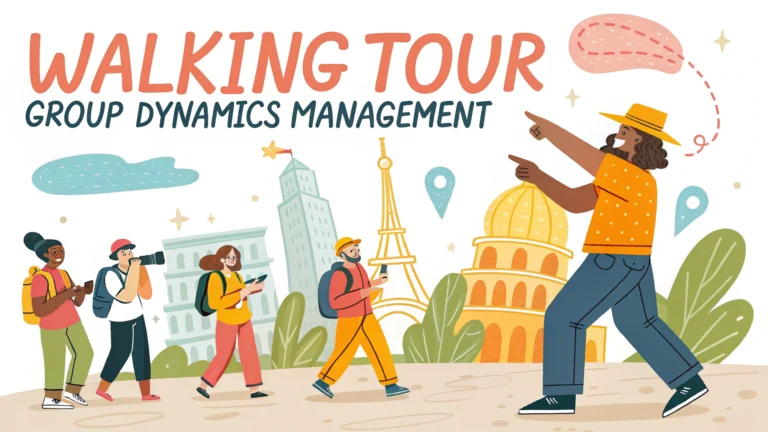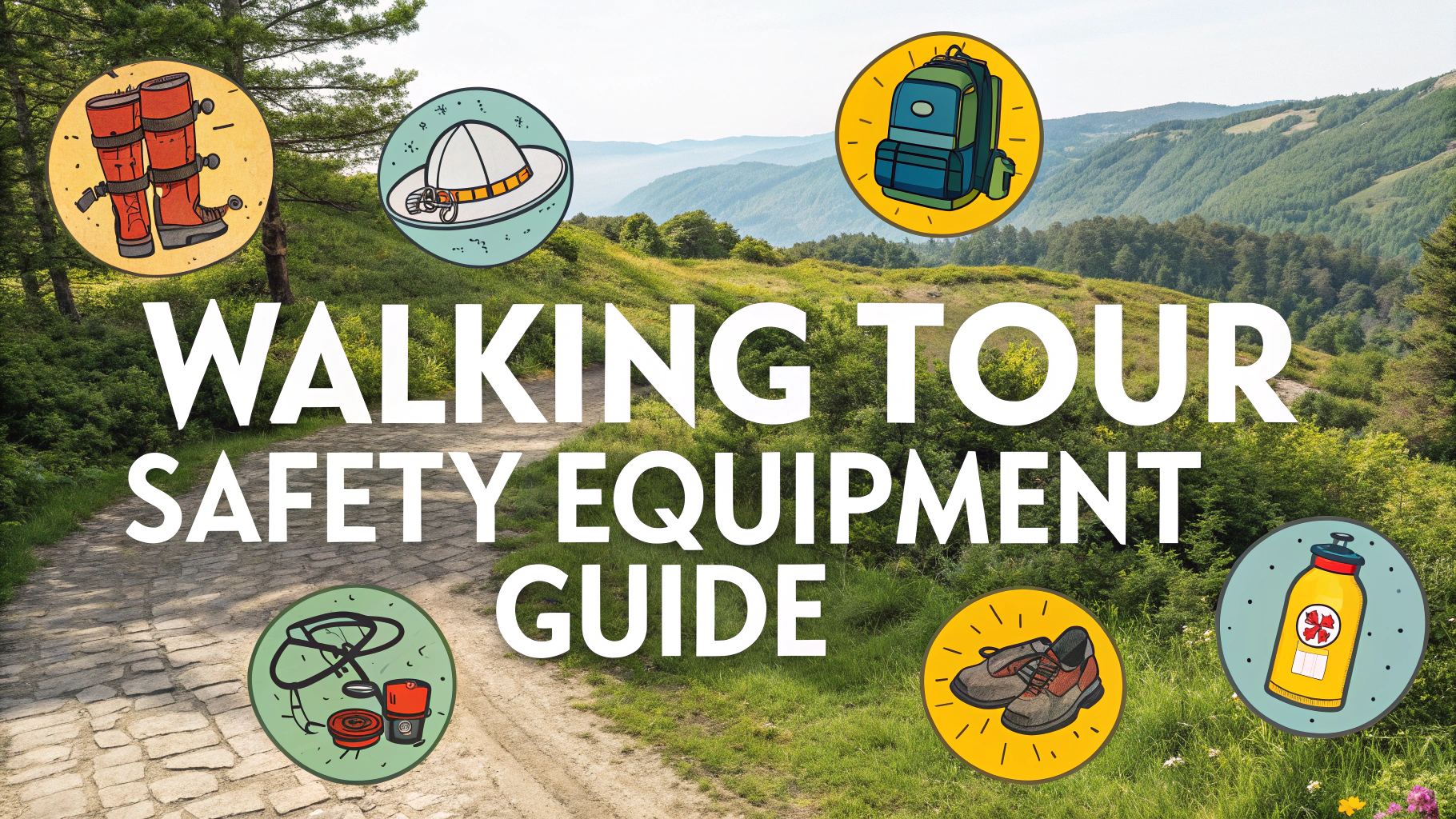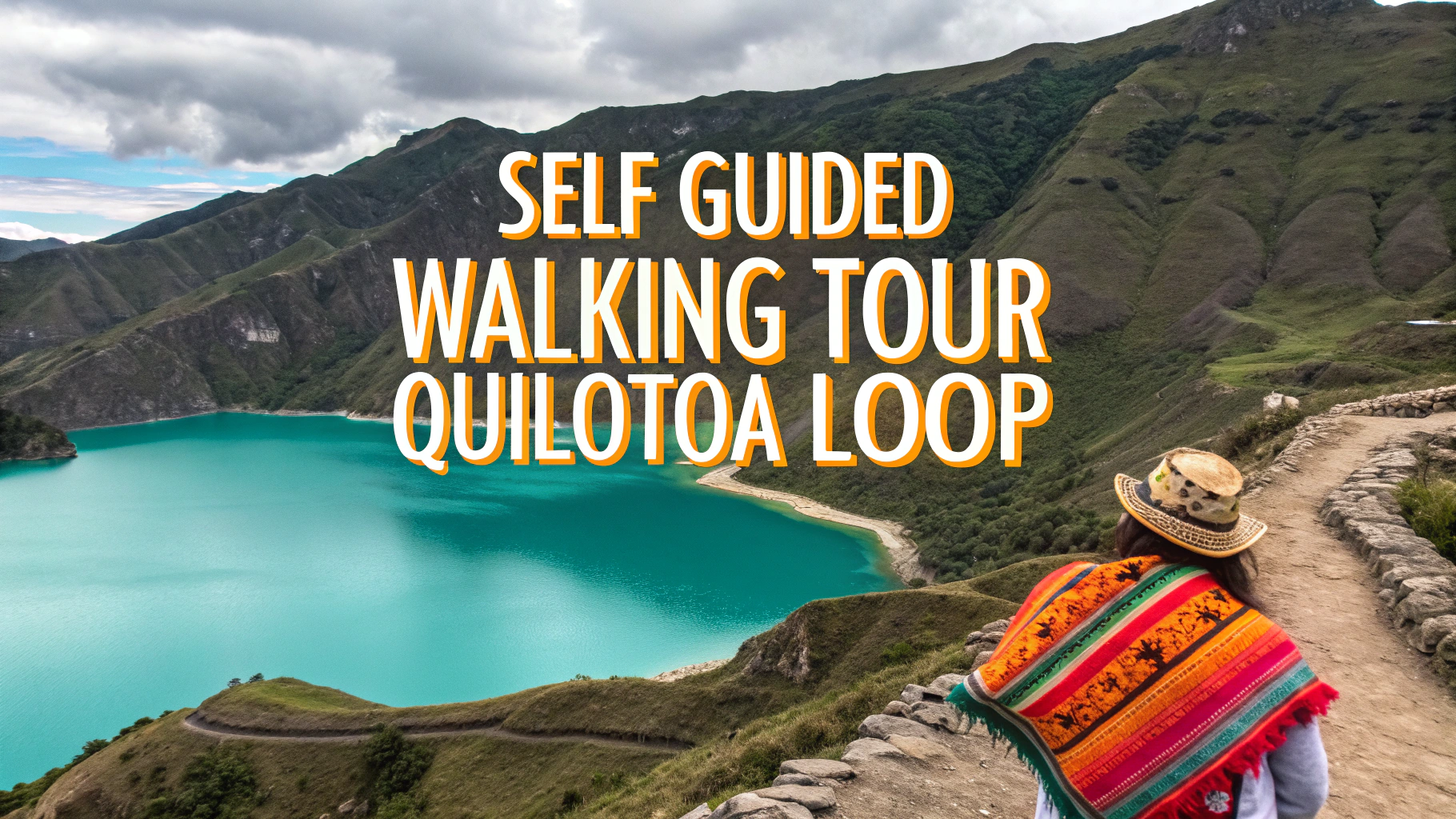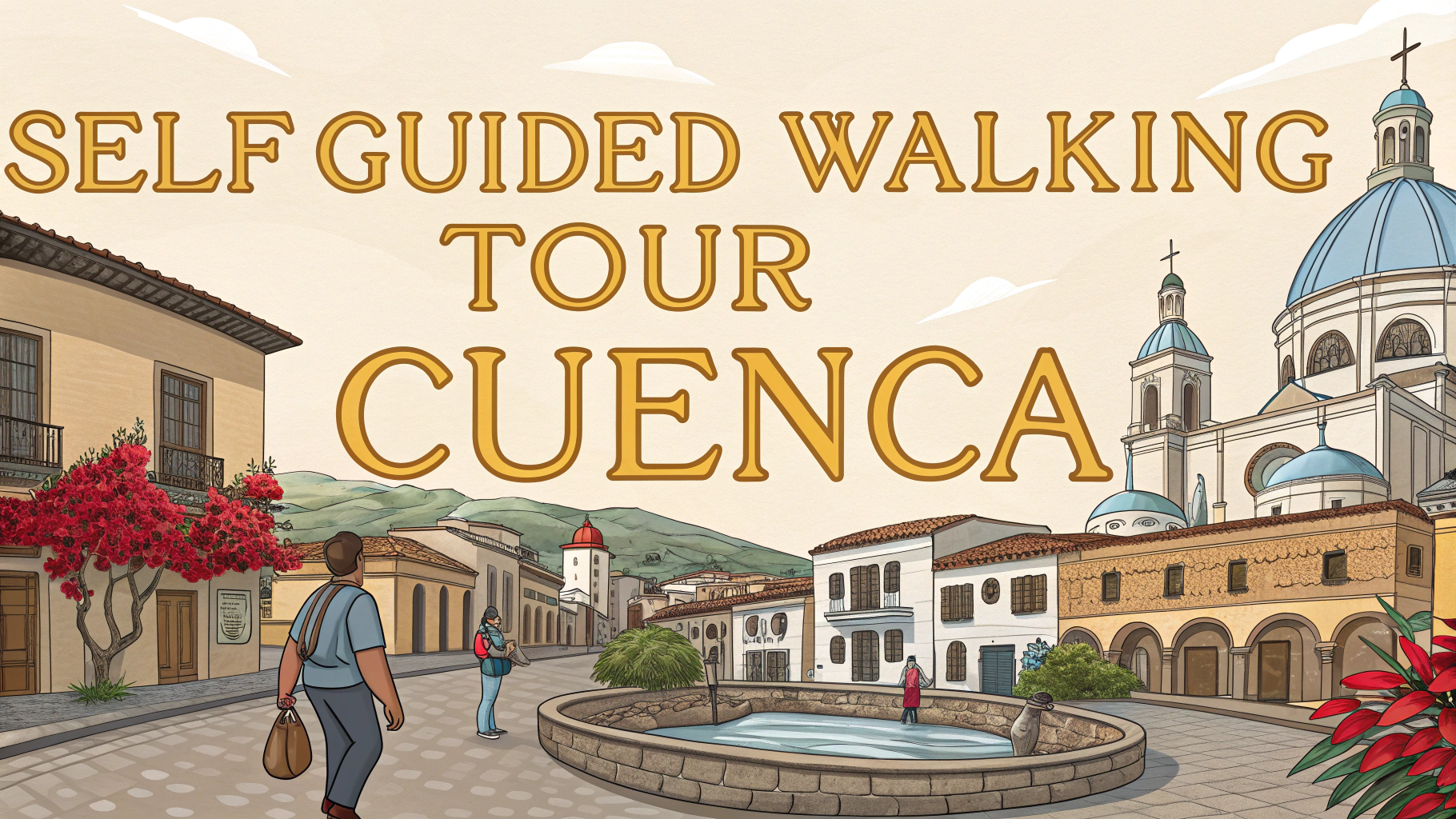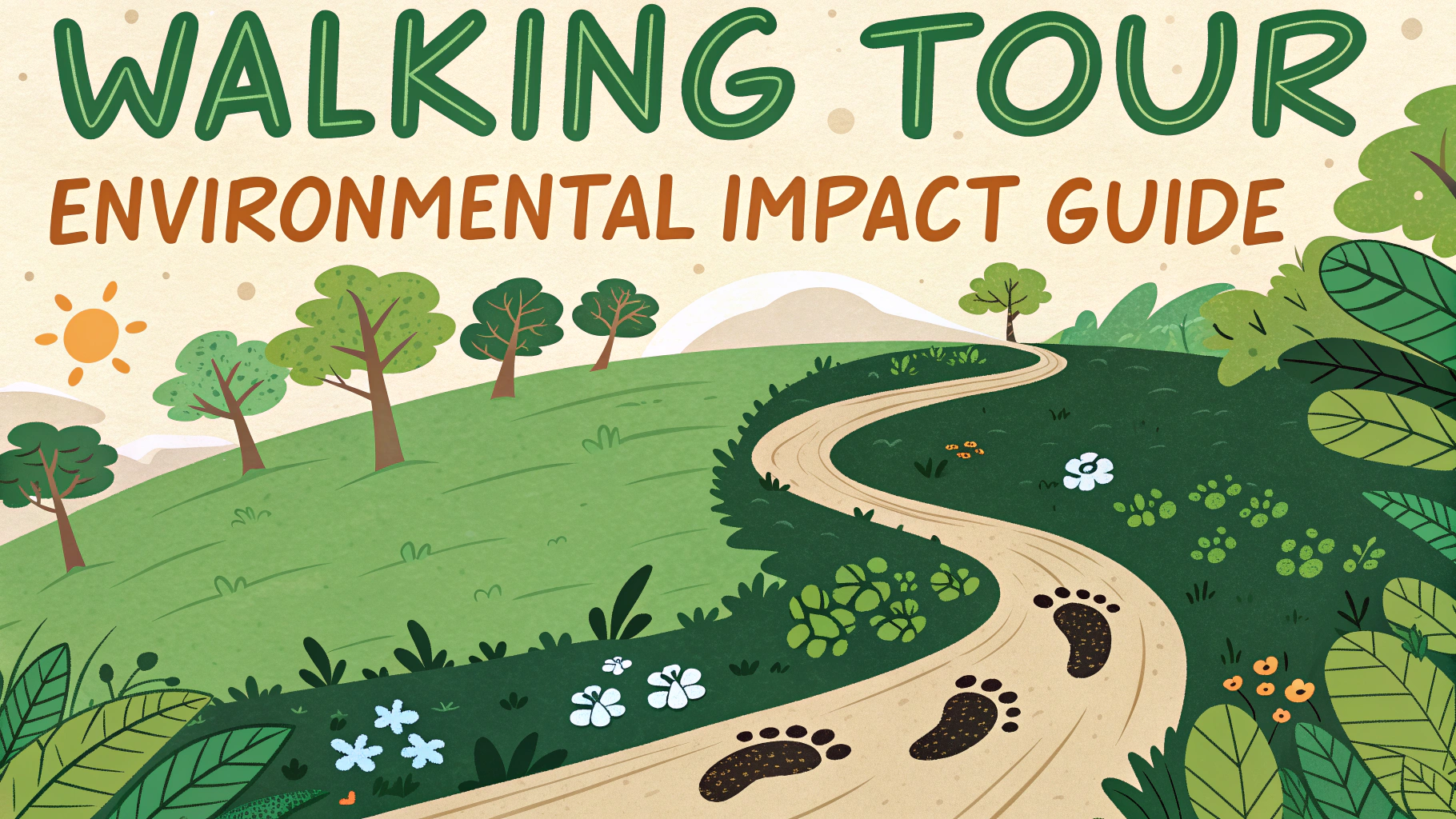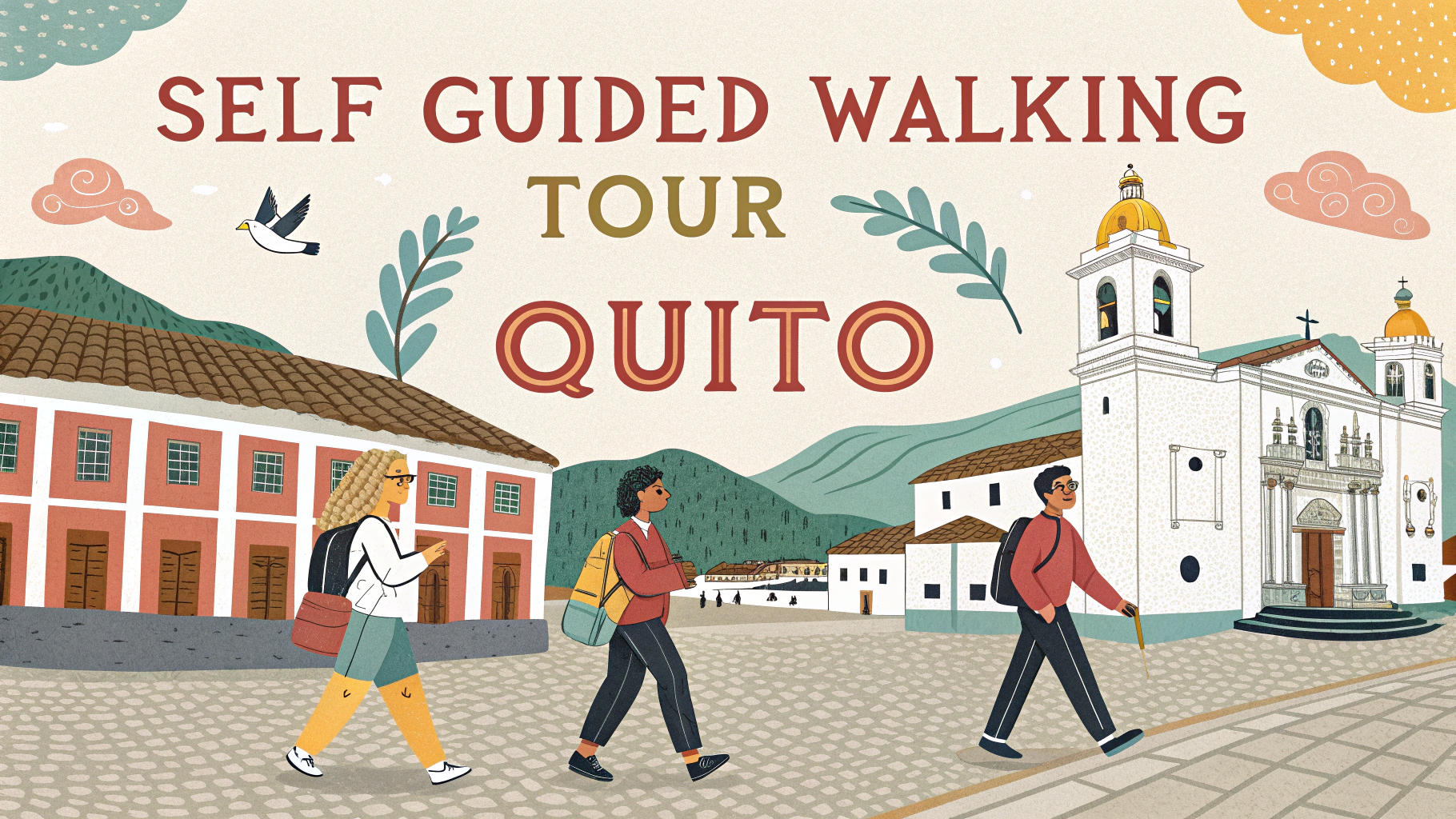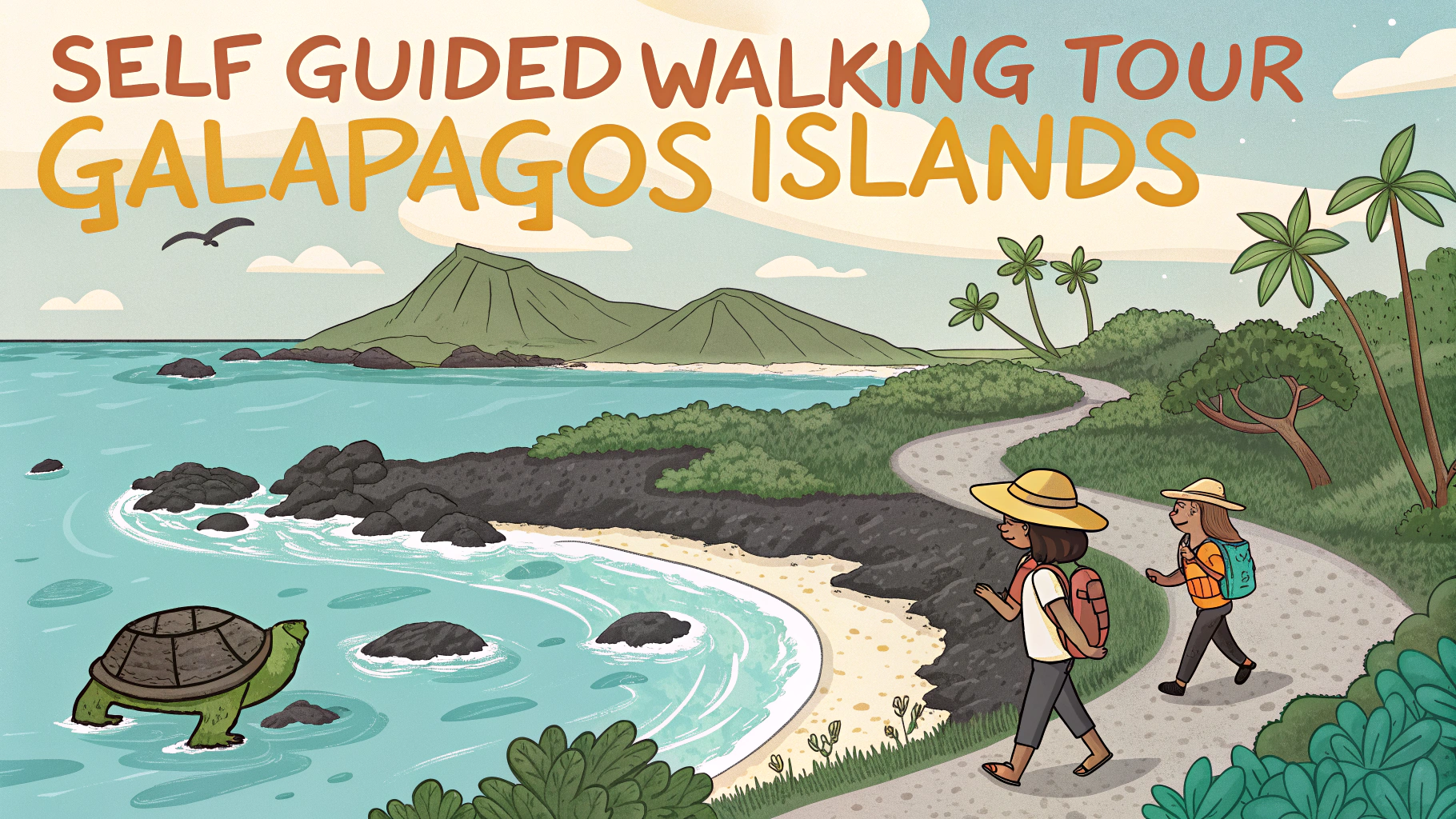Managing group dynamics during walking tours requires careful planning and specific strategies to ensure everyone has an enjoyable experience.
Setting the Right Pace
A comfortable walking pace typically falls between 2.5-3 mph for most adult groups.
- Position faster walkers at the back of the group
- Place slower walkers near the front
- Schedule regular rest stops every 20-30 minutes
- Monitor the group’s energy levels
Group Size Management
The ideal size for a walking tour group ranges from 8-15 people to maintain good communication and control.
Tips for Large Groups:
- Split into smaller sub-groups of 10-12
- Assign a leader for each sub-group
- Use two-way radios for communication between leaders
- Establish clear meeting points
Communication Tools
Clear communication systems help keep groups organized and safe.
- Hand signals: Stop, slow down, gather
- Voice commands: “Group up,” “Taking five”
- Mobile apps: WhatsApp or GroupMe for instant messaging
Safety Measures
Safety should always be the top priority during walking tours.
- Carry a first-aid kit
- Keep emergency contact information for all participants
- Plan alternate routes in case of weather changes
- Share route maps with all participants
Self-Guided Tour Tips
Self-guided tours require additional preparation and resources.
- Download offline maps
- Create detailed route descriptions
- Mark key landmarks and rest stops
- Include local emergency numbers
Recommended Apps for Self-Guided Tours
| App Name | Best For |
|---|---|
| Maps.me | Offline navigation |
| AllTrails | Trail mapping |
| Google Maps | Urban navigation |
Equipment Checklist
- Portable charger
- Water bottles
- Weather-appropriate clothing
- Comfortable walking shoes
- Small backpack
Rest Stop Planning
Strategic rest stops help maintain group energy and cohesion.
- Plan stops near facilities
- Choose scenic locations
- Include cultural or historical points of interest
- Space breaks 45-60 minutes apart
For emergency assistance during urban tours in the US, dial 911 or contact local tourist information centers.
Weather Considerations
Weather conditions can significantly impact walking tours and require specific adaptations.
- Check weather forecasts before departure
- Have a backup indoor route planned
- Bring appropriate weather protection
- Consider seasonal timing for optimal conditions
Group Engagement Strategies
Keeping participants engaged enhances the overall tour experience.
- Include interactive elements
- Share interesting facts about locations
- Encourage questions and discussion
- Use storytelling techniques
Special Needs Considerations
Accommodating diverse abilities ensures an inclusive tour experience.
- Research accessibility options
- Plan alternative routes when needed
- Allow extra time for mobility challenges
- Keep medical information readily available
Documentation Tips
Proper documentation helps improve future tours and manage liability.
- Maintain participant records
- Document any incidents
- Collect feedback after tours
- Take photos for marketing (with permission)
Conclusion
Successful walking tours require careful attention to group dynamics, safety, and logistics. By implementing these management strategies, tour leaders can create engaging experiences while maintaining group cohesion and safety. Regular evaluation and adjustment of these practices ensure continuous improvement and participant satisfaction.
Remember that flexibility and adaptability are key components of successful tour management, as each group brings its own unique dynamics and challenges.
FAQs
- What is the ideal size for a walking tour group to maintain effective group dynamics?
The ideal size for a walking tour group is 12-15 people. This number allows for good social interaction while remaining manageable for guides and ensuring all participants can hear and participate effectively. - How can I keep my group together during busy city walks?
Establish a clear meeting point system, use bright identifiers like flags or colored umbrellas, implement a buddy system, and conduct regular headcounts at predetermined stops. - What’s the recommended spacing between groups on popular walking tour routes?
Maintain at least 50-100 meters between different tour groups to avoid audio interference and overcrowding at attractions. This spacing helps preserve the experience for all participants. - How should self-guided tours handle timing between attractions?
Allow 1.5 times the estimated walking duration between attractions to accommodate photo stops, rest breaks, and varying walking speeds of group members. - What are the essential safety protocols for walking tour groups?
Establish clear emergency meeting points, share guide/organizer contact information, provide basic first aid supplies, and brief participants on local emergency numbers and procedures. - How can tour leaders effectively manage different walking speeds within a group?
Position faster walkers at the back and slower ones near the front, designate a sweep person to ensure no one falls behind, and schedule regular regrouping points. - What’s the best way to handle restroom breaks during walking tours?
Plan stops every 90-120 minutes at locations with reliable facilities, mark them clearly on tour maps, and communicate the next available stop to participants in advance. - How should weather conditions impact walking tour management?
Have predetermined alternate routes for inclement weather, communicate clear cancellation policies, and provide guidance on appropriate clothing and gear for expected conditions. - What technology tools are most effective for self-guided walking tours?
GPS-enabled audio guides, offline mapping applications, QR-code accessible information points, and downloadable tour apps with clear navigation instructions. - How can tour organizers accommodate accessibility needs in walking tours?
Provide detailed route information including terrain, stairs, and distances, offer alternative accessible routes, and clearly communicate physical requirements in advance.
